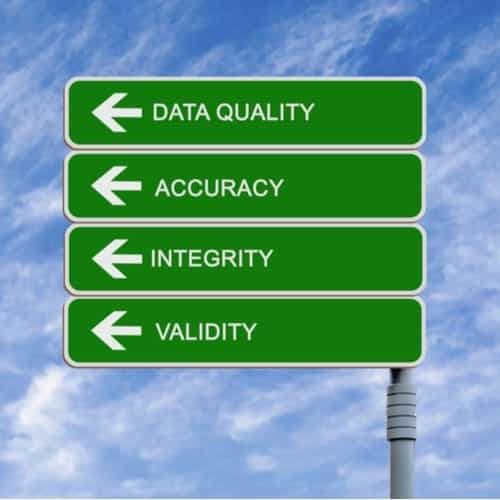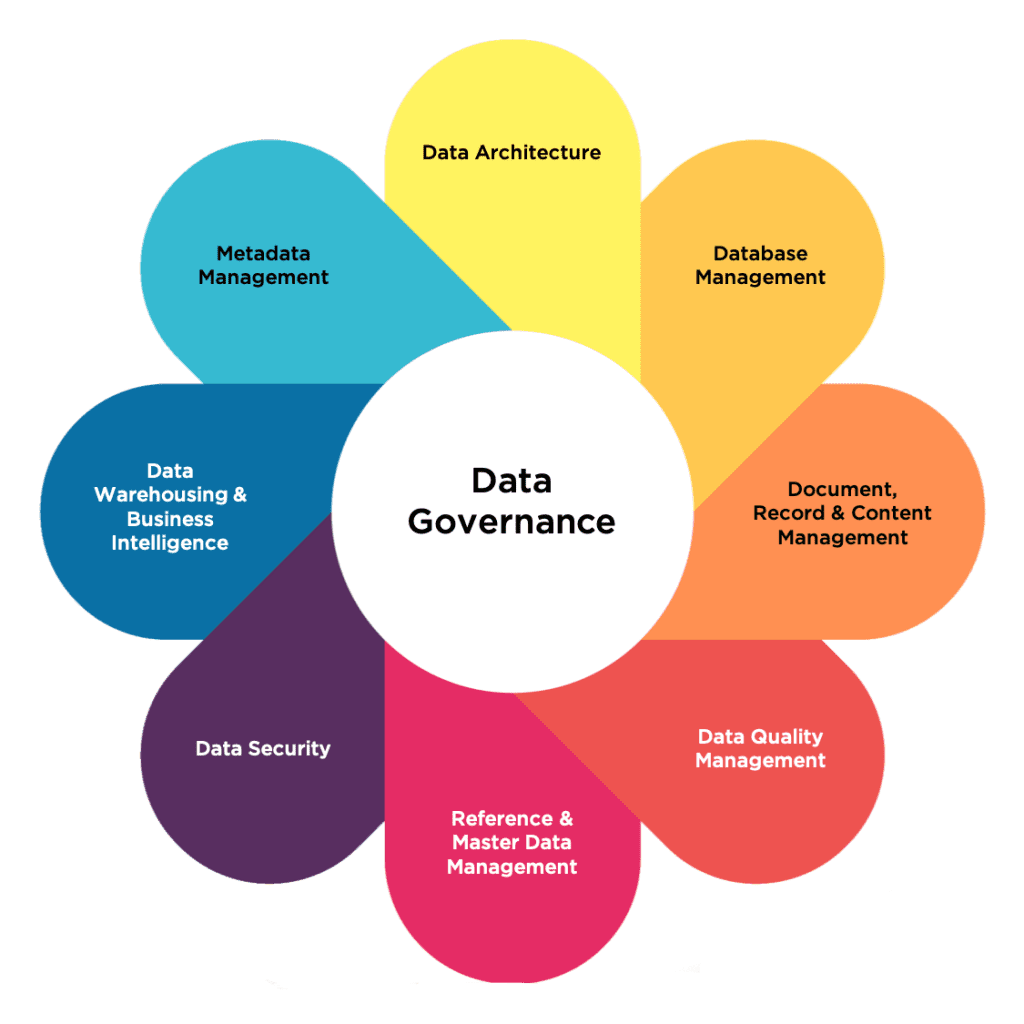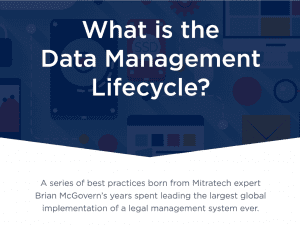Dem Thema Data Governance und seiner Bedeutung im Vergleich zum Datenmanagement wird heute viel Aufmerksamkeit gewidmet.
In den letzten Jahren hat sich Data Governance von einem esoterischen Begriff, der nur von IT-Fachleuten verwendet wurde, zu einem Thema entwickelt, mit dem sich eine Vielzahl von Menschen befasst, von den oberen Rängen der Unternehmen über mittlere Manager bis hin zu Gesetzgebern weltweit.
Dennoch ist Data Governance für viele noch immer nicht klar. Darüber hinaus verwechseln viele den Begriff mit dem allgegenwärtigen Datenmanagement. Was ist also der Unterschied zwischen Data Governance und Datenmanagement? Inwiefern sind sie ähnlich? Und, was noch wichtiger ist, ist dies für GRC-Experten von Bedeutung?
Was ist Datenmanagement?
Um zu verstehen, was sie voneinander unterscheidet, ist es hilfreich, eine klare Definition der einzelnen Begriffe zu haben. Da es das Datenmanagement schon länger gibt und es im Allgemeinen besser verstanden wird, fangen wir dort an. Nach Angaben von Dataversityist Datenmanagement...
...ist eine umfassende Sammlung von Praktiken, Konzepten, Verfahren, Prozessen und einer breiten Palette von Begleitsystemen, die es einer Organisation ermöglichen, die Kontrolle über ihre Datenressourcen zu erlangen.
Einfacher ausgedrückt: Datenmanagement ist genau das, wonach es klingt: Es geht darum, wie Ihr Unternehmen alle Aspekte seiner Daten verwaltet. Aus diesem Grund wird es in der Regel als Aufgabe der IT-Abteilung betrachtet, die Daten zu organisieren und zu kontrollieren, damit sie für die Benutzer zugänglich und aktuell sind.
Was ist Data Governance?
Im Gegensatz dazu geht es bei Data Governance eher um die Regeln für den Umgang mit Daten. Informatica definiert Data Governance als umfassende...
"...die Strategien und Technologien, die eingesetzt werden, um sicherzustellen, dass die Geschäftsdaten mit den Vorschriften und Unternehmensrichtlinien übereinstimmen."
Data Governance ist also der Rahmen oder das Modell dafür, was ein Unternehmen mit seinen Daten macht, unter welchen Umständen und mit welchen Methoden. Data Governance ist eine ganzheitliche Geschäftsstrategie, im Gegensatz zum Datenmanagement, bei dem es um die Details der Operationalisierung von Daten geht. Data Governance legt Leitlinien und Richtlinien dafür fest, wie ein Unternehmen den finanziellen Nutzen von Daten ermittelt und priorisiert und gleichzeitig die Geschäftsrisiken durch schlechte Daten oder andere datenbezogene Probleme mindert.
Der Aufstieg der Data Governance
Der Begriff Data Governance ist erst in den letzten Jahren in Mode gekommen. Und der Begriff ist nicht von allein in den Vordergrund gerückt: Er wurde durch Ereignisse wie die Datenpanne bei Starwood Hotels, bei der die Daten von über 500 Millionen Gästen betroffen waren, die Datenpanne bei Yahoo, bei der über drei Milliarden Benutzerkonten betroffen waren, und zahllose andere ähnliche Ereignisse in den Vordergrund gerückt. Sie alle haben die Einführung von Data Governance in Unternehmen vorangetrieben.
Unter anderem aufgrund dieser Verstöße haben Regierungen auf der ganzen Welt Datenschutzgesetze erlassen. Ein solches Beispiel ist das General Data Privacy Protection Actdas 2018 in Kraft getreten ist und regelt, wie Länder in der EU mit personenbezogenen Daten umgehen - und hat Auswirkungen darauf, wie Vermarkter aus Nicht-EU-Ländern personenbezogene Daten von in der EU ansässigen Personen erfassen. Ein weiteres Beispiel ist der California Consumer Privacy Actder die Privatsphäre der kalifornischen Bürger schützen soll.

Data Governance ist Teil einer Datenmanagementstrategie
Die Data-Governance-Strukturen, die Unternehmen einrichten, sind ein Teil ihrer umfassenden Datenverwaltungsstrategie.
Betrachten Sie es vom Umfang her: Datenmanagement ist ein weit gefasster Begriff, der alle Aspekte der Beschaffung, Speicherung und Verwendung von Daten in Ihrem Unternehmen umfasst. Unterhalb dieses Rahmens der Datenverwaltung liegt die Data Governance, die sich im engeren Sinne mit den Richtlinien und Verfahren befasst, wie Daten verwaltet und verwendet werden, um Ihre Geschäftsziele zu erreichen und Risiken zu vermeiden.
Allerdings umfasst "eng" immer noch ein breites Spektrum von Bereichen, wie Sie in der folgenden Grafik sehen können.
 Wie sollte dies in der Praxis ablaufen? Zunächst sollte Ihre Organisation eine Datenmanagement-Strategie oder Rahmen, der in groben Zügen festlegt, wie Sie Daten verwalten werden. Sobald dies festgelegt ist, kann Ihr Unternehmen beginnen, Folgendes zu entwickeln einen Rahmen für die Datenverwaltung Aufzeigen, wie die von Ihnen verwalteten Daten die Unternehmensziele unterstützen können.
Wie sollte dies in der Praxis ablaufen? Zunächst sollte Ihre Organisation eine Datenmanagement-Strategie oder Rahmen, der in groben Zügen festlegt, wie Sie Daten verwalten werden. Sobald dies festgelegt ist, kann Ihr Unternehmen beginnen, Folgendes zu entwickeln einen Rahmen für die Datenverwaltung Aufzeigen, wie die von Ihnen verwalteten Daten die Unternehmensziele unterstützen können.
Gemeinsame Arbeit zur Stärkung der Organisation
Obwohl sie unterschiedliche Bedeutungen haben, schließen sich Data Governance und Datenmanagement keineswegs gegenseitig aus. Stattdessen können und sollten sie als eine Einheit betrachtet werden, um die Art und Weise zu stärken, wie Ihr Unternehmen mit seinen Daten umgeht und sie schützt, insbesondere die persönlichen Daten von Kunden und Interessenten, und um Daten zu Ihrem Vorteil zu nutzen.
Die Kurzfassung? In Zeiten wie diesen müssen Unternehmen Data Governance nutzen, um Regeln und Richtlinien für die Verwaltung und Sicherung ihrer Daten festzulegen und ihren Ansatz für die Datenverwaltung zu verbessern und zu stärken.
Auf diese Weise ist Ihr Unternehmen besser darauf vorbereitet, Daten für geschäftsfördernde Zwecke zu nutzen, und besser gegen die ständig wachsende Bedrohung durch datenbezogene Risiken und Haftung geschützt.
[bctt tweet="Unternehmen auf der ganzen Welt führen als Reaktion auf neue Datenschutzvorschriften und Sicherheitsbedenken eine Data Governance ein." username="MitratechLegal"]



